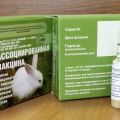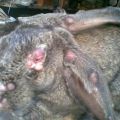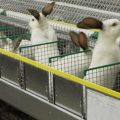Symptoms of myxomatosis in rabbits and methods of treating the disease at home
Such a deadly viral disease as myxomatosis develops rapidly in rabbits and often leads to the death of animals. It is carried mainly by mosquitoes, which cannot be protected from. It is customary to vaccinate young animals at the age of 30-45 days. However, sometimes the virus returns. Sick rabbits are destroyed, a mild nodular form of the disease is treated with moxibustion.
General description of the disease
Myxomatosis is a very dangerous viral disease of rabbits that cannot be treated at all and can lead to the death of the entire breeding stock. Rabbit breeders try to prevent infection and vaccinate young animals against this disease at the age of 30-45 days.
The causative agent of myxomatosis is a DNA-containing virus of the genus Leporipoxvirus, belonging to the Poxviridae family. In sick rabbits, serous-purulent conjunctivitis from the nose is observed, reddish nodules and spots form on the ears and eyes. Solid subcutaneous tumors are possible on different parts of the body, including the anus and external genitalia. A sick animal has difficulty breathing, wheezes, coughs, and fluid flows from the nose. Redness in the form of spots around the eyes, small pimples on the ears are visible as early as 3-5 days of infection.
Rabbits of any age can get myxomatosis, often not vaccinated, and sometimes even receiving a vaccine. The incubation period lasts from 2 to 20 days. The disease can be acute or subacute. Any of them are dangerous to the life of animals.
Myxomatosis can occur in two clinical forms:
- edematous (gelatinous edema on the body);
- nodular (limited nodules on the head and other parts).

Important! If not vaccinated, the animal may die. The edematous form always leads to the death of rabbits. Nodular disease only in 10-30 percent of cases ends with recovery.
How does the infection take place?
The virus can be found in water, soil, contaminated grain, hay, grass. It is spread by blood-sucking insects, in whose body it persists for up to seven months, as well as rodents. Most often outbreaks of myxomatosis are observed in spring-summer, with the onset of mosquito and fly activity. The peak of the disease occurs in August. In winter, animals get sick with myxomatosis less often.
It is almost impossible to protect the rabbit population from the virus. It can be found in commercial feed and contaminated grain. Animals become infected with the virus through food, drink, insect bites.
Symptoms of the disease
There are two forms of myxomatosis: edematous and nodular. Each of them has its own signs and characteristics of the course.Initially, any form begins with reddish specks in the eyelids and small bumps on the ears.
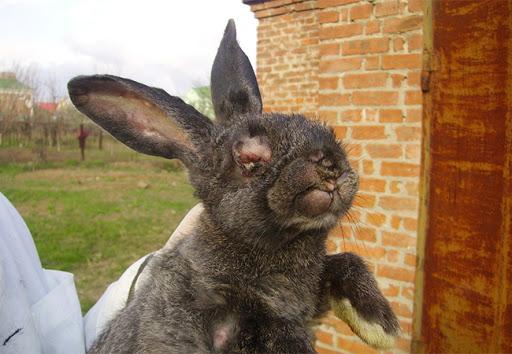
Edematous form
The classical form is characterized by an acute course of the disease. Duration - 5-6 days. Rabbits have swollen heads and ears. Then the eyelids swell and turn red, conjunctivitis appears, pus is released from the eyes and nose. Sick rabbits have a hard time breathing. The temperature rises to 40 degrees, then drops sharply.
Outwardly, the symptoms are as follows: lachrymation, runny nose, shortness of breath, cough, wheezing. Sometimes subcutaneous gelatinous infiltrates appear, that is, dense bumps on the neck or other parts of the body. The mortality rate is 100 percent.
Nodular form
The nodular form of the disease is easier than edematous. Papules, nodules of various sizes (from a millet grain to a pigeon's egg) appear on the ears, near the eyes, all over the head and on other parts of the rabbit's body. After two weeks, foci of necrosis are formed at the site of nodular growths. The disease lasts 30-40 days. Body temperature is kept within normal limits. The mortality rate is 70-90 percent.
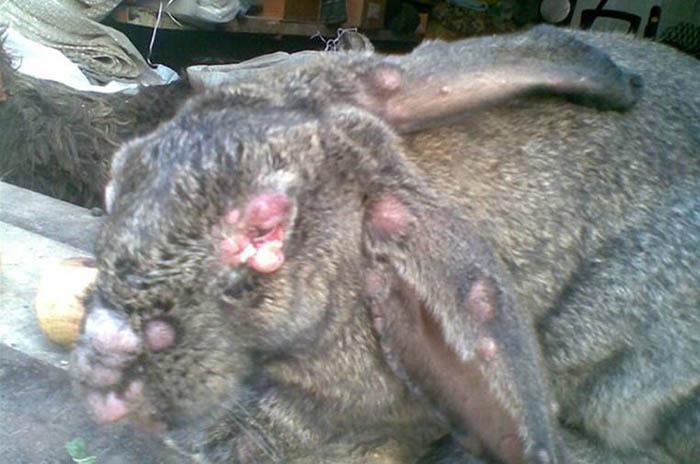
Diagnostic methods
The diagnosis can only be made by a veterinarian. It is impossible to define the disease on your own. The fact is that the symptoms of myxomatosis are very similar to smallpox, staphylococcosis, wandering pyemia. Only a specialist will be able to determine the virus on the basis of the clinical picture, pathological changes and laboratory results. Diagnostics should be carried out in the clinic. The rabbits are examined, biological samples are taken from them, and a histological analysis of the pathological material is made.
How to cure myxomatosis in rabbits
It is not easy to heal animals from this disease. No drugs have been developed for the treatment of myxomatosis. The mortality rate is 70-100 percent.
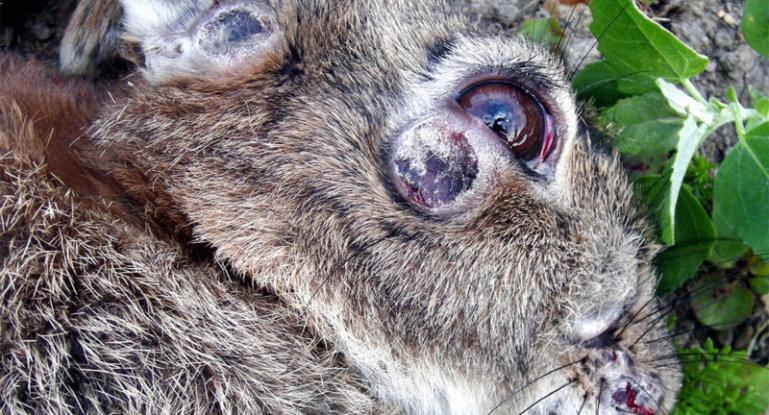
Antibiotic use
It is known from theory that antibiotics only treat bacteria, not viruses. The fact is that bacteria are full-fledged living cells. Viruses are a non-cellular life form. Antibiotics are unable to recognize and kill the virus or the cell it infects. The veterinarian, having diagnosed myxomatosis, advises not to carry out treatment at home, but simply to cull and destroy sick rabbits. Healthy animals with no symptoms of infection need to be quarantined urgently.
However, with the nodular form of myxomatosis, about 10-30 percent of rabbits can recover in 30-40 days and receive immunity to this disease. True, weakened animals can get sick with a runny nose and pneumonia. It is in this case that an antibiotic (4% Gentamicin) will help them.
In parallel, it is recommended to cauterize nodules on the skin with an antiseptic ("ASD-3"). If myxomatosis occurs in vaccinated rabbits a few months after vaccination, then they should immediately be given Gentamicin injections (3 times a day, 5 days in a row), cauterize the nodules with an antiseptic, and inject the Gamavit vitamin preparation.
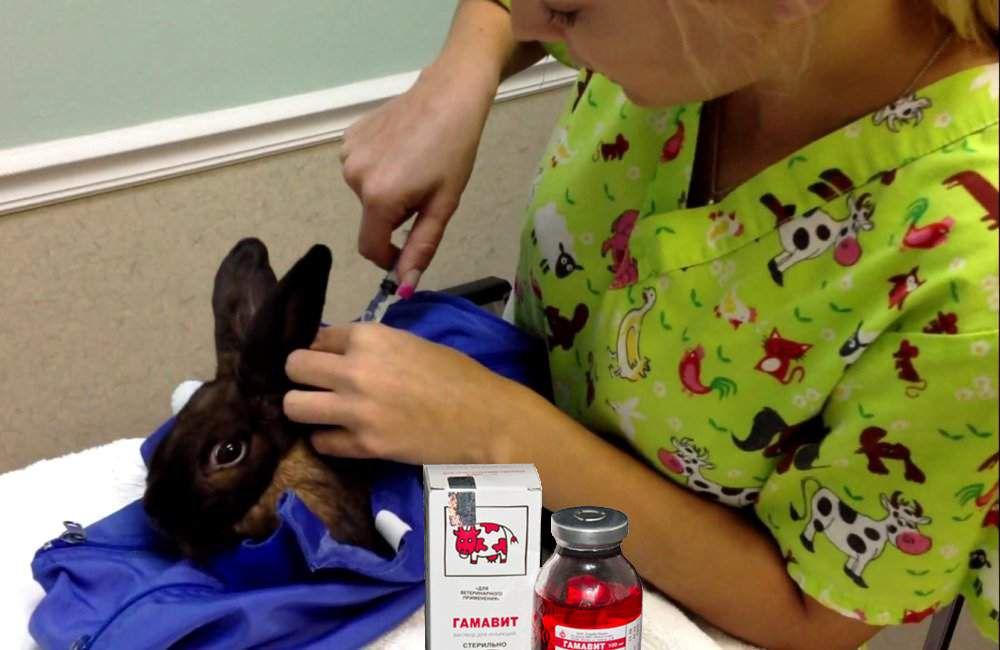
Important! It is forbidden to treat rabbits with antibiotics of the penicillin group. These drugs cause indigestion.
Folk remedies
It is also not recommended to treat myxomatosis with folk methods. There is information on the Internet that this virus can be killed by marigolds, antiseptics ("Iodinol"). In fact, these treatments are ineffective. It is better to get rid of even a rabbit who has had a mild illness.In an outwardly healthy, but infected animal, a number of internal changes occur, the meat becomes disgusting in appearance (red, mottled with infiltrates). Only timely vaccination can save rabbits from the virus.
Preventive actions
As a prevention of myxomatosis, a number of sanitary measures and vaccination of rabbits are carried out. Particular attention is paid to keeping animals. The cells are regularly cleaned and disinfected. Rabbits are given only clean water and uncontaminated food. In spring and summer, animals are protected from mosquitoes, and fleas are removed once a quarter.
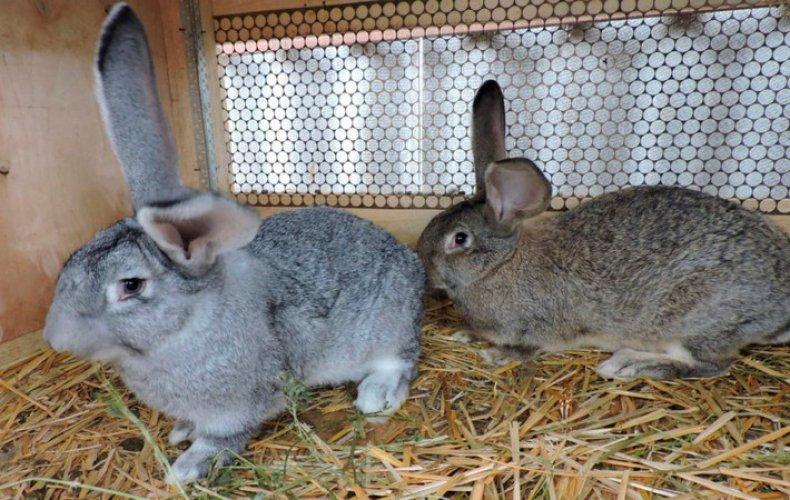
Rabbits are vaccinated against myxomatosis at 30-45 days of age. The weight of the animal must be more than 500 grams. Vaccinated pets gain immunity for 6-12 months. Usually, animals are given an associated vaccination against myxomatosis and viral hemorrhagic disease. The vaccine can be bought at a veterinary pharmacy (Mixoren, Pestorin, Lapimun). Only healthy rabbits are vaccinated. The vaccine will no longer help the sick. Before the injection, the animals are given anthelmintic drugs.
Quarantine measures
Usually, breeders decide for themselves whether a rabbit is healthy or not. Pay attention to the behavior of the animal. If the animal is active, eats well, then there is no reason to worry. If the rabbit huddled in a far corner, refuses to feed, lowered its ears, then it is urgently isolated from its relatives.
A sick animal is transplanted into a separate cage. The insulator should be located in a different room. The quarantine period lasts about 30-40 days. During this period, animals are fed with hay, carrots, grain, watered with clean water, and given injections "Gamavita". The cage is harvested 2 times a day. During the quarantine period, the condition of the animal is closely monitored. Early diagnosis allows you to quickly begin treatment or at least prevent infection of the entire livestock.
If symptoms similar to myxomatosis are found, it is recommended to show the rabbit to the veterinarian or call a specialist to the farm. If the diagnosis is confirmed, the farm is quarantined, and all infected animals are required to be destroyed. Only timely vaccination will help save livestock from disposal.


